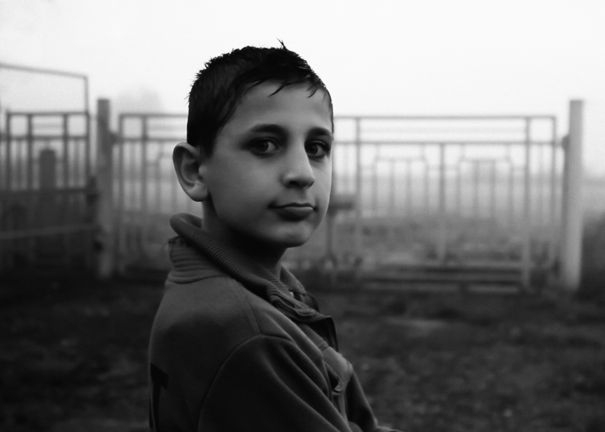A WONDERLAND AMONG THE WASTE
Anne Kodura’s meticulously composed documentary struggles to outgrow its childlike gaze.

WASTELAND
WASTELAND – SO THAT NO ONE BECOMES AWARE OF IT (ÖDLAND – DAMIT KEINER DAS SO MITBEMERKT, Germany) from Berlinale Generation meditates upon the rural ghettoization of asylum seekers from a child’s eye view. Revolving around a group of young Syrian and Lebanese children living in asylum in Germany, the film is a visual marvel, yet it fails to grapple with the true implications of this social problem. Director Anne Kodura, who previously worked as a script supervisor, frames the story of the spirited Mohammed, Mustafa and Aya in classical form. Owing to Kodura’s background in continuity, the film is rigorously constructed, with meticulous black & white camera setups and seamlessly clean editing. The film’s core strength is the way in which Kodura captures the children’s behaviour without seeming at all intrusive, yet remaining intensely formal in style.
The strong approach to form is entirely in service to the concept that the film must represent the child’s perspective. There is something magical in the children’s adventures around their home. The block of flats in which they live is surrounded by fields, wind turbines, woodland and a marvelous stockpile of junk. Kodura shows this landscape as a playground for the children’s creative minds; in one nighttime shot the turbines look like giants with lights for eyes in the desolate German countryside. However, this transcendence distracts from the readily apparent social disconnection that the children experience.
We are never shown the children’s parents, yet we hear them in voiceover, painting an entirely contradictory picture to the film’s visuals. The parents express their dissatisfaction with being so isolated in Germany, yet Kodura’s choice to physically separate them from their children actually retracts the weight of their words. We are made to feel that the children are alienated from their parents, yet this is not the case; the parents and children as a group are lost without a community.
Ultimately the film fails to develop its concept beyond the children’s point-of-view. Had Kodura shot contrasting scenes from the adult perspective, the film would have achieved a pertinent counterpoint which would expound the problem of ghettoization. Instead the film is a childlike flight of fancy, built upon a disconcerting backdrop of cultural alienation.

